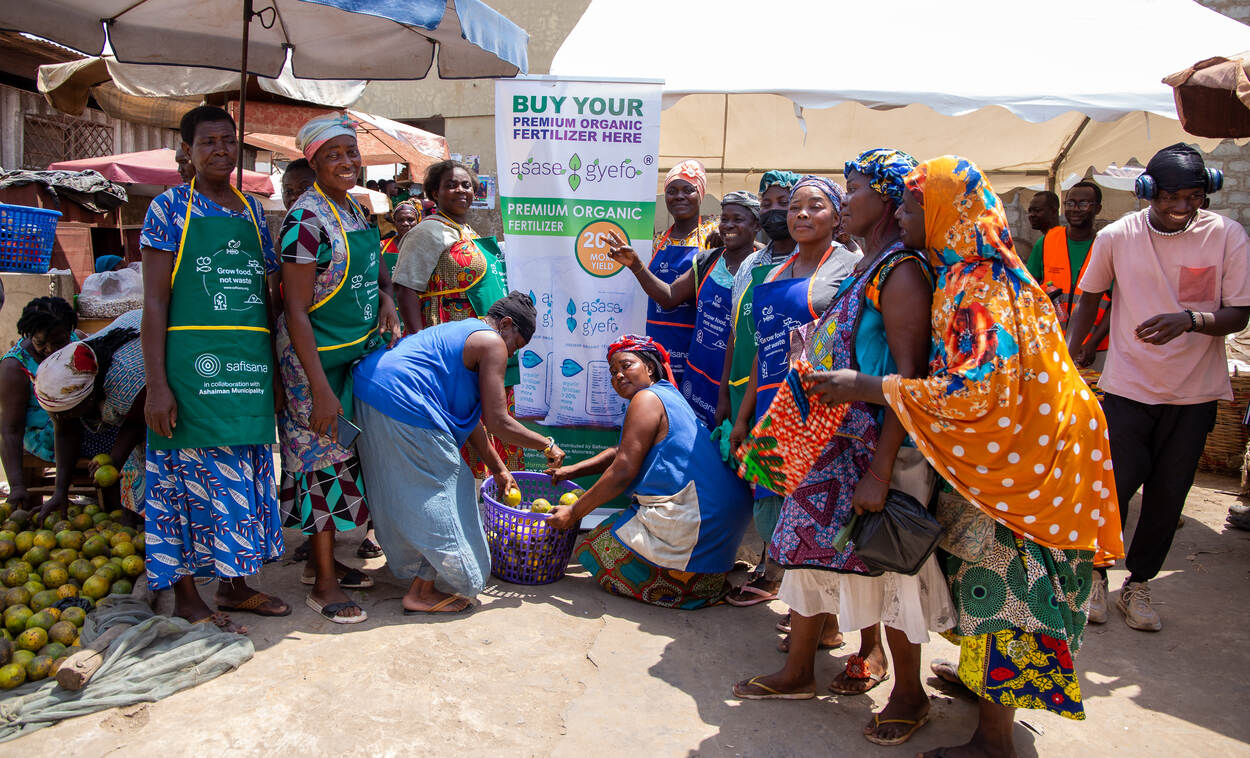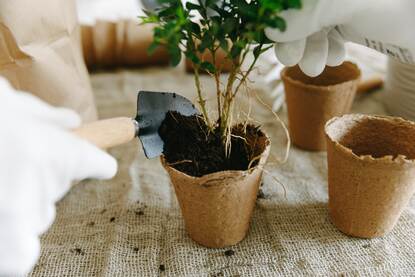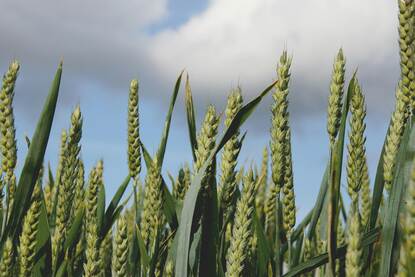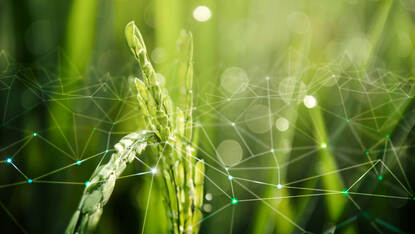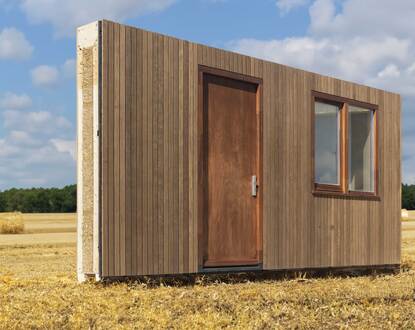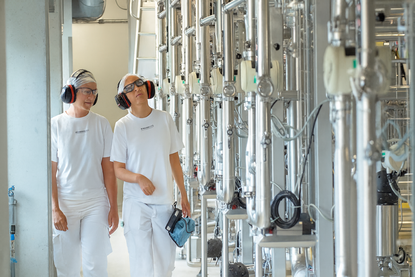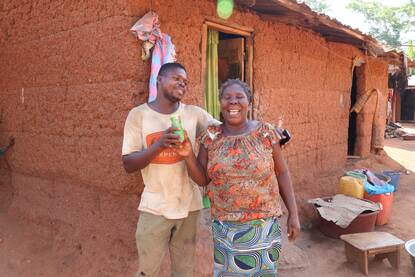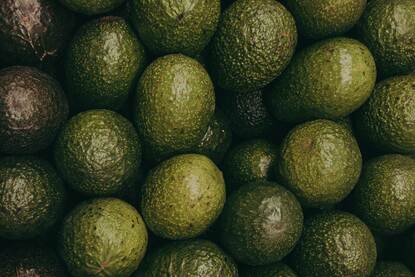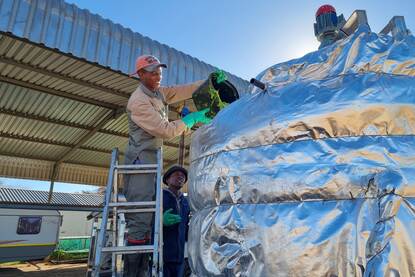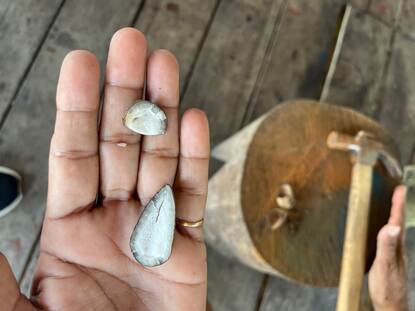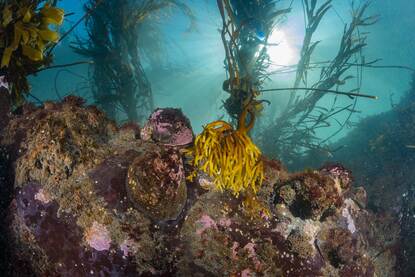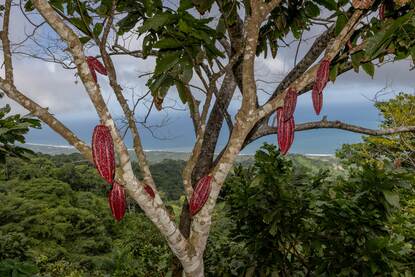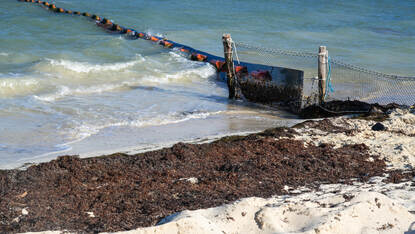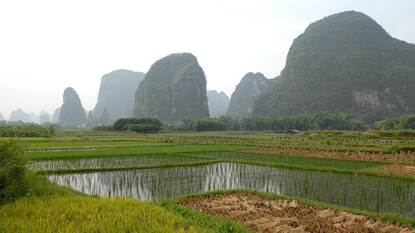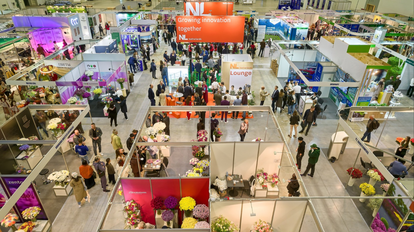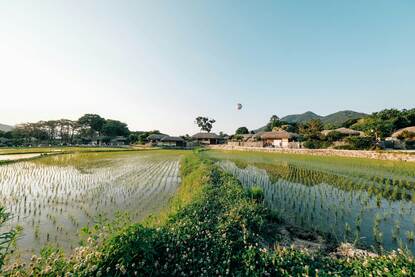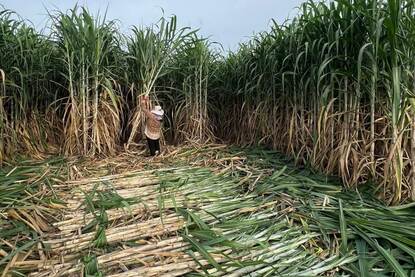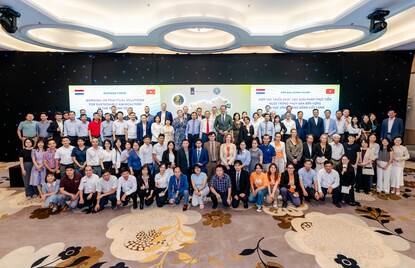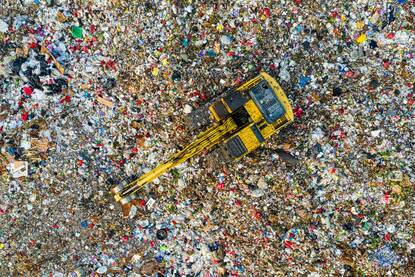Foto Market women proudly stand beside Asase Gyefo, Safisana’s bio-fertilizer produced from recycled market waste. Source: Safisana
Ghana’s bioeconomy is emerging as a driver of sustainable development, turning waste challenges into new green opportunities. With agriculture employing over half the workforce and producing millions of tons of staple crops each year, the country urgently needs solutions to soil degradation, climate change, and mounting waste. In this interview, Elikplim Asilevi, General Manager of Safisana Ghana, shares how his company is transforming organic and fecal waste into clean energy and eco-friendly fertilizers, and how these innovations are reshaping both farming and sanitation in Ghana.
Ghana recognizes the bioeconomy as a critical pathway to sustainable development, focusing on transforming organic waste into valuable resources such as compost, energy, and animal feed. The government has actively pursued policies to reduce waste and promote a circular bioeconomy.
Initiatives include:
-
The establishment of the Circular Bioeconomy Innovation Hub (CBEIHub), led by the International Water Management Institute (IWMI) and 16 institutions across research, public and private sectors;
-
The adoption of Hybrid Waste-to-Energy Policy Guidelines, developed by the CSIR-Science and Technology Policy Research Institute, to guide policymakers; and
-
Investments pushed through the Environmental Protection Agency to encourage value addition from waste.
Safisana, a for-profit social enterprise founded in Ghana with roots in the Netherlands, has been pioneering a model for over a decade that transforms organic and fecal waste into clean energy, irrigation water, and eco-friendly fertilizers that restore soils and improve crop yields. This closed-loop approach not only tackles sanitation and energy shortages but also supports thousands of farmers with sustainable inputs.
Role of LAN
The Netherlands Agricultural Network (LAN) team at the Dutch Embassy in Accra has played a vital role in amplifying this impact. By connecting Safisana to Dutch-funded initiatives — such as the ACHI project, community gardens, and the Ghana Netherlands Seed Partnership — the LAN team ensures that the fertilizers and compost are tested in field trials and linked to broader horticultural programs. Together, they support Ghana’s shift to a bioeconomy that strengthens food security, creates jobs, and promotes climate-smart farming—showing that sustainable development can also be profitable.
To explain more about the work of Safisana, the LAN team in Accra interviewed the General Manager of Safisana Ghana Elikplim Asilevi.
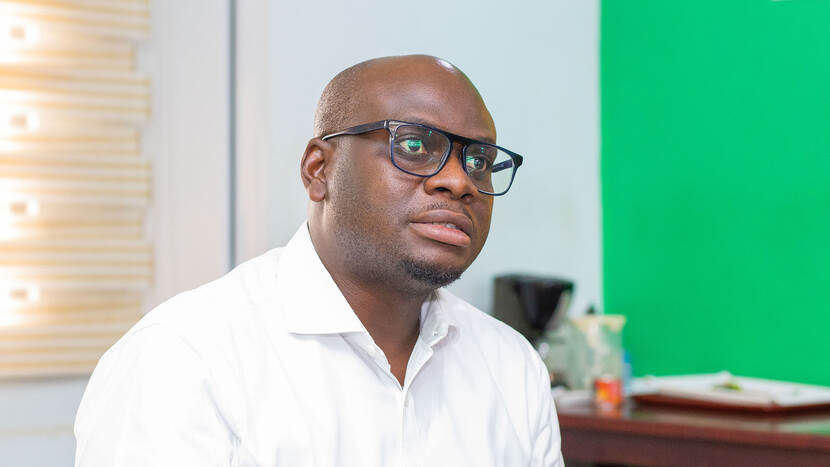
How does Safisana define its role within the emerging bioeconomy landscape?
‘Safisana is dedicated to empowering communities by transforming 7,699 tons of waste into valuable resources through its innovative waste recycling plant-in-a-box. It is the operational blueprint of Safisana: a fully integrated circular economy recycling facility which can be replicated in non-sewered urban settings in low- and middle-income countries. As a leader in the circular bioeconomy, Safisana converts fecal and organic waste into high-value products like bioelectricity, biogas, and biofertilizers.’
‘By integrating waste management within energy production and agriculture, the company helps close resource loops, reduce waste accumulation and greenhouse gas emissions, and mitigate public health risks. Safisana’s approach showcases how localized bioeconomy solutions can simultaneously drive environmental sustainability, social well-being, and economic growth.’
Safisana is an innovative enterprise offering circular, cost-effective waste management solutions for governments and industries in low- and middle-income countries. In 2017, the company launched West Africa’s first waste-to-energy plant in Accra, impacting over 80,000 people. Safisana now aims to scale and replicate its model across non-sewered communities throughout the African continent, driving social, economic, and environmental impact.
What motivated Safisana to focus on transforming organic waste into bioenergy and organic fertilizers?
‘With rapid urbanization, Ghana faces increasing challenges in managing its waste. Untreated wastewater often carries harmful pathogens, including bacteria, viruses, and parasites, which pose serious risks to waterways. When such contamination reaches drinking water sources, it can lead to waterborne diseases such as diarrhea and cholera. In addition, using untreated wastewater for crop irrigation can introduce heavy metals into the soil and plants. Over time, these toxic substances accumulate in crops, increasing the risk of long-term health problems such as kidney and liver damage.’
‘Currently, about 84-88% of domestic wastewater in Ghana goes untreated. Landfills contribute between 20-40% of methane emissions. Non-hydro renewable energy contributes only about 2.3% to the energy mix. And around 35% of soil is degraded in Ghana.’
‘These figures underline why Safisana’s work is relevant in the Ghanaian context. By combining waste treatment, energy generation, and soil restoration, Safisana addresses public health, energy security, and soil degradation all at once.’
‘By combining waste treatment, energy generation, and soil restoration, Safisana addresses public health, energy security, and soil degradation’
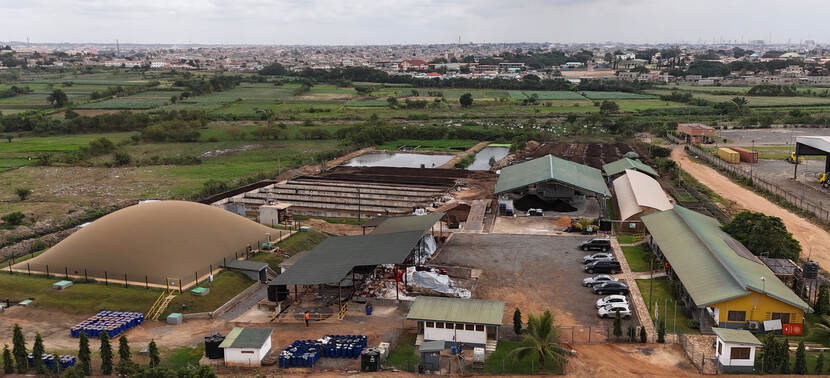
How does Safisana’s business model support circular economy principles?
‘It does so by converting fecal and organic waste into valuable resources. By diverting waste from landfills and uncontrolled dumping, the model helps to reduce pollution, lower dependence on fossil fuels, and cut CO₂ emissions by approximately 3,923 tons per year.’
‘Synthetic fertilizers are replaced with organic biofertilizers, reducing import needs by 30,285 kilograms and minimizing chemical use and soil degradation. Waste collected from community toilets, markets, and food industries is treated through anaerobic digestion and composting, producing biofertilizers, renewable natural gas, and bioelectricity. These outputs strengthen local agriculture and energy supply, close resource loops, generate economic value, and reduce carbon footprints.’
How does Safisana’s technology improve resource efficiency compared to traditional waste management methods?
‘Our technology enhances resource efficiency in three ways: by recovering energy, by nutrient recovery and by water reuse. Organic waste is converted into biogas and bioelectricity through anaerobic digestion, reducing fossil fuel reliance and greenhouse gas emissions. It also recovers nutrients by producing organic fertilizer that supports sustainable farming and decreases chemical fertilizer use.’
‘Additionally, treated wastewater is reused for composting and irrigation, cutting pollution and conserving water. This integrated, circular approach maximizes resource recovery and environmental benefits, offering a sustainable alternative to conventional waste disposal.’
What types of organic waste are most suitable for Safisana’s process, and how do you source these materials sustainably?
‘Our process depends on a consistent supply of organic waste from three main sources: food market waste, industrial food processing waste, and fecal sludge. Large volumes of food waste are collected from local markets, whereas high-quality industrial organic waste is sourced from major food companies (such as Nestlé, Sono Ghana and Olam Tomato).’
‘Additionally, fecal sludge from public toilets and septic tanks provides sustainable sanitation while generating valuable resources. We have built partnerships with local municipalities to facilitate market waste collection.’
‘The Cocoa Research Institute of Ghana (CRIG) has certified Asase Gyefo as highly effective for cocoa seedlings’
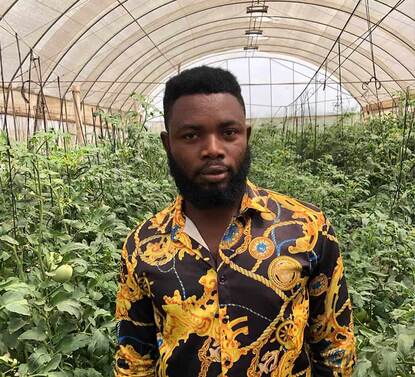
How does Safisana’s organic fertilizer support sustainable farming, soil health and crop yields?
‘Asase Gyefo, our premium organic fertilizer, restores soil health by increasing microbial activity and nutrients. It reduces reliance on chemical fertilizers, improves water retention during dry periods, and lowers emissions by recycling waste.’
‘Trials and farmer feedback show clear benefits. Asase Gyefo raises soil carbon and fertility. Farmers report yield gains of 20-100%, stronger crops, and longer shelf life for produce. Farmer Kelly Ampofo from Unique Vegetable Farms Limited, Accra, for instance, explains that ever since he started using Safisana’s Asase Gyefo compost three years ago, he gets better yields from his crops in his greenhouse than before.’
‘The Cocoa Research Institute of Ghana (CRIG) has certified Asase Gyefo as highly effective for cocoa seedlings, and ongoing trials aim to extend certification for cocoa tree crops. These results underscore the product’s potential to transform soil management practices while promoting sustainable agriculture across value chains.’
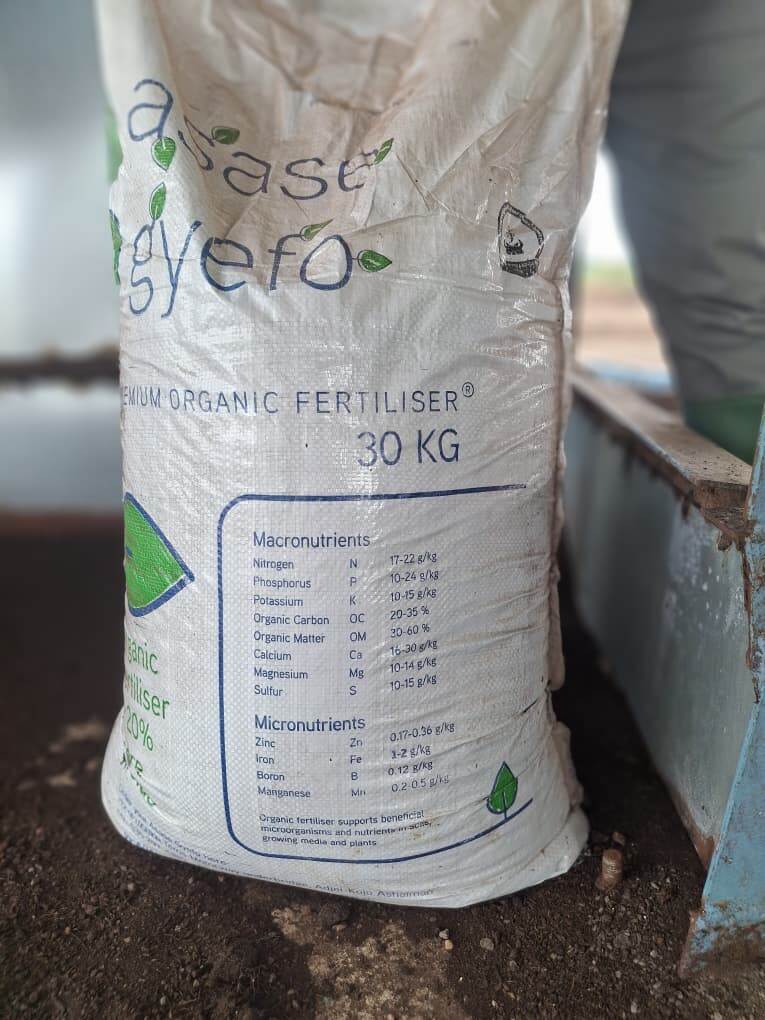
Which forms of bioenergy does Safisana produce, and how do these integrate into local energy systems?
‘We produce two main forms of bioenergy: bioelectricity and biogas. Biogas is converted into electricity via Combined Heat and Power (CHP) generators and supplied to Ghana’s national grid under a Power Purchase Agreement (PPA) boosting the country’s renewable energy mix. A PPA is a long-term contract between the Ghanian government, or its utility institution, and a power producer, often an Independent Power Producer (IPP). Under this agreement, the government commits to purchasing electricity generated by the producer under agreed terms. PPAs play a central role in Ghana’s electricity sector, particularly with IPPs that generate alternative energy from sources such as solar, coal, nuclear, and biogas.’
‘Also, raw biogas can be upgraded to renewable natural gas (RNG) for industrial use, reducing fossil fuel dependence.’
'Our company supplies 683,252 kWh of electricity and 540,165 m³ of gas to the national grid each year, while continuing to scale up its capacity in both electricity and gas production. This approach supports renewable energy supply, especially in cities and surrounding areas.’
What is the impact of what Safisana does?
‘The impact is significant. Inhouse evaluations together with Energy Commission and Environmental Protection Agency officers show that it:
-
Cuts 5,000 tons of CO₂ emissions by diverting waste from landfills and replacing chemical fertilizers.
-
Improves sanitation and waste treatment for 63,000 people.
-
Provides renewable energy for 3,000 individuals.
-
Supports 17,000 farmers with organic fertilizer, boosting yields and household income on an average of 187 acres per farmer.
-
Has created 200 jobs, all filled locally.
Safisana’s work also contributes to significant methane reduction compared to landfill disposal, which is critical since methane is far more potent than CO₂ as a greenhouse gas. The figures cited come from internal monitoring data and supported studies linked with Dutch-funded horticultural projects.’
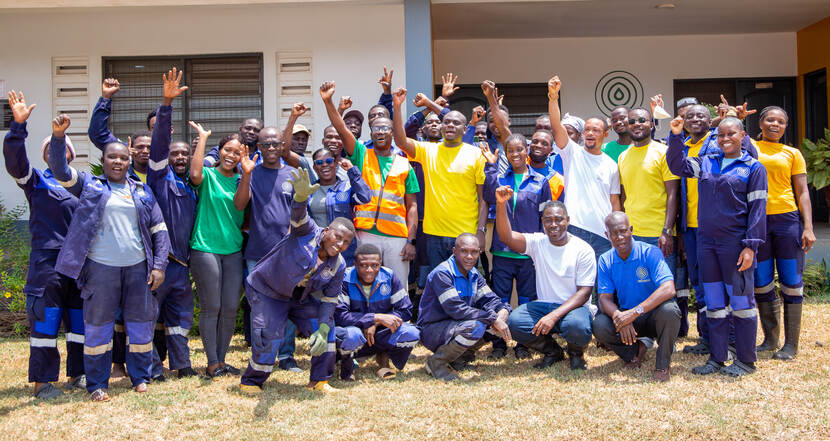
How accessible are your products to smallholder farmers or communities that rely heavily on sustainable agriculture?
‘We prioritize accessibility to ensure that smallholder farmers can benefit from Asase Gyefo. To achieve this, we maintain affordable and competitive pricing, making the product accessible without compromising quality.’
‘Our distribution network is designed for nationwide reach, leveraging agro-input dealers, farmer cooperatives, and direct sales at our facilities in Accra and Kumasi. This ensures that farmers across various regions can conveniently access the product.’
‘In addition, we invest in awareness and capacity-building initiatives, including farmer demonstrations and hands-on training sessions. These programs educate farmers on the proper application of organic fertilizers and highlight the long-term benefits for soil health, crop yield, and sustainability.’
How important are partnerships and the role of the LAN team?
‘Safisana’s success is built on strong partnerships with government bodies, NGOs, and development organizations. Key collaborators include the Cocoa Research Institute (CRI), the Ministry of Energy, the Ministry of Sanitation, the Ministry of Food and Agriculture, the Bill & Melinda Gates Foundation, Plan International, and Sint Antonius Stichting Projecten. These partnerships secure feedstock, connect Safisana to power grids, and embed its services into national sanitation strategies.’
‘The LAN team at the Dutch Embassy in Accra has been instrumental in expanding our reach. Building on initiatives such as the ACHI project and Community Seed Banks, the team also supports Safisana’s role in the Ghana Netherlands Seed Partnership. Within this framework, Safisana will take part in an upcoming Impact Cluster, designed to strengthen collaboration and scale solutions in the seed and horticulture sector.’
‘This support helps improve farmer livelihoods by enhancing soil fertility, promoting local food production with biofertilizers, and encouraging climate-smart practices. In partnership with cooperatives, farmer groups, and organizations like Holland Greentech, the LAN team provides training, digital advice, and access to sustainable inputs, enabling farmers to build resilience.’
‘On a practical level, the LAN team facilitates field trials, connects Safisana to Dutch-funded horticultural projects, and creates opportunities through trade missions (see text box below) and sector events. Plans include scaling demonstration projects, expanding the Impact Cluster, and strengthening the Ghana Netherlands Seed Partnership. Safisana’s role covers varietal trials of vegetable seeds, using its organic fertilizers to improve trial field soils. Among these efforts are trials conducted with Holland Greentech using Dutch seed varieties.’
The LAN team will also contribute to creating an enabling environment by improving policies and regulations through the Agricultural Working Group on Ghana’s seed sector.’
Challenges ahead
‘Ghana’s bioeconomy is developing step by step. Safisana shows that waste can be managed in ways that improve sanitation, strengthen farming, and expand renewable energy. Partnerships between local actors and international networks are key to scaling these solutions.’
‘The next challenge is to build on these examples and make sure sustainable practices remain reliable, accessible, and profitable for the communities that depend on them.’
The Netherlands trade mission: Agrofood Ghana 2025 – horticulture & cocoa
From 27 October to 1 November 2025, the Netherlands Enterprise Agency, the Dutch Embassy in Accra, and the Ghana Netherlands Business & Culture Council are organizing a trade mission to Ghana. The mission focuses on horticulture and cocoa, two sectors with great potential thanks to Ghana’s fertile soil, good climate, and growing demand.
Dutch companies working in seeds, green technology, irrigation, fertilizers, and digital solutions are taking part. The program will include networking, business matchmaking, field visits, and participation in the Dutch Pavilion at Agrofood Ghana. It will also offer practical insights, market exposure, and new opportunities for business and cooperation.
More information
For more information about the mission, you can visit the website of the Netherlands Enterprise Agency.
More information
Would you like to know more about the transformation of organic and fecal waste into clean energy and eco-friendly fertilizers in Ghana? You can visit the country page of Ghana at the website Agroberichtenbuitenland of the Dutch Ministry of Agriculture, Fisheries, Food Security and Nature. You can also send an email to the LAN team in Accra: acc-lvvn@minbuza.nl.
